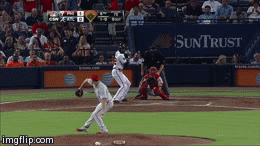
Decade and MLB consultant for over two decades) and Fred Claire (World Series-winning general
manager of the Los Angeles Dodgers and member of the club’s front office for 30 years.)
Media is welcome to use this information. We would ask for a reference and, if possible, a link to AriBall.com. ###
 |
 |
His weaknesses against lefties is also exemplified by his line drive numbers. Against righties, he has shown to be a strong line drive hitter with good power numbers as evidenced from 5% or greater line drive rates and some semblance of home run rates to fastball and other pitches However, against lefties, he struggled mightily with poor contact rates (high whiff rates above 15% and low line drive rates below 4%).
Source: Baseball Savant
Source: Baseball Savant
With a new team and a new hitting philosophy in St. Louis, Jason Heyward looks to breakout in the upcoming season.
Even though everyone in St. Louis can expect another solid season from Heyward in the form of a 5 WAR or greater season,
Jason Heyward still has a lot of room to grow as a hitter. In the outfield, it is no question that he is part of an elite
selection of supremely athletic ballplayers that can change the course of a game with consistent spectacular plays on
defense. As a hitter, if Heyward can show some patience at the plate and look for his pitches to hit against lefties,
he should figure to improve dramatically and provide more flexibility in the Cardinals lineup as a middle of the order bat.
NOTE: All statistics accurate as of 11/29/14
By Sanjay Pothula


Source: Brooks Baseball


Source: Brooks Baseball

In general, it is really easy to conclude Jason Heyward has underachieved in comparison to the enormous potential
put on him at a young age from the heaps of praise as the next “Dave Winfield.” However, as the aging graph shows,
by setting PA constant at 600, Jason Heyward has performed at a level that is comparable to the other top outfielders,
who just received extensions or new contracts. For example, Heyward has performed at a level comparable to Carl Crawford,
who received a 7-year $142 million dollar contract for his age 30 season in 2010. This is where the brain can play tricks
on one because, from the plain eye test, it looks like Heyward has severely underachieved based on his body type and his
expected performance. Although he has always been compared against his contemporary in Giancarlo Stanton, Stanton has
proven to be an outfielder in a whole other class from other top outfielders. However, it is still obvious from Heyward’s
per season Weighted Runs Above Average (WRAA), he has produced at a consistent rate of 15 to 20 runs of offensive production
per season for the past 4 seasons. In addition, going into his age 26 season, Heyward should break out based on the
performance of players of comparable nature such as Carlos Beltran and Matt Kemp, who both saw their peak performances
after their age 25 season.
AriBall.com

